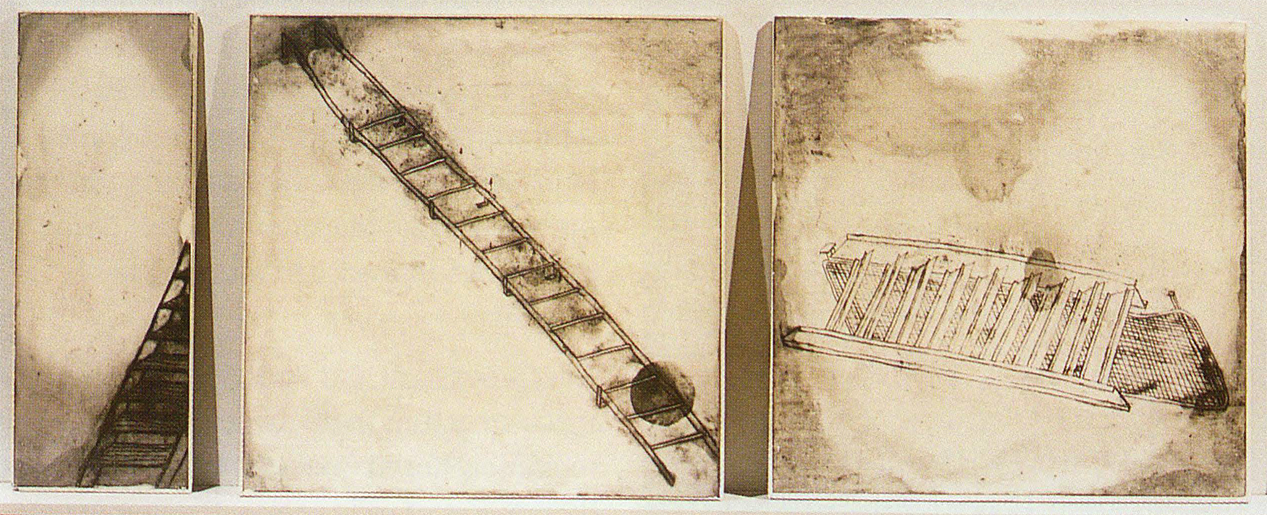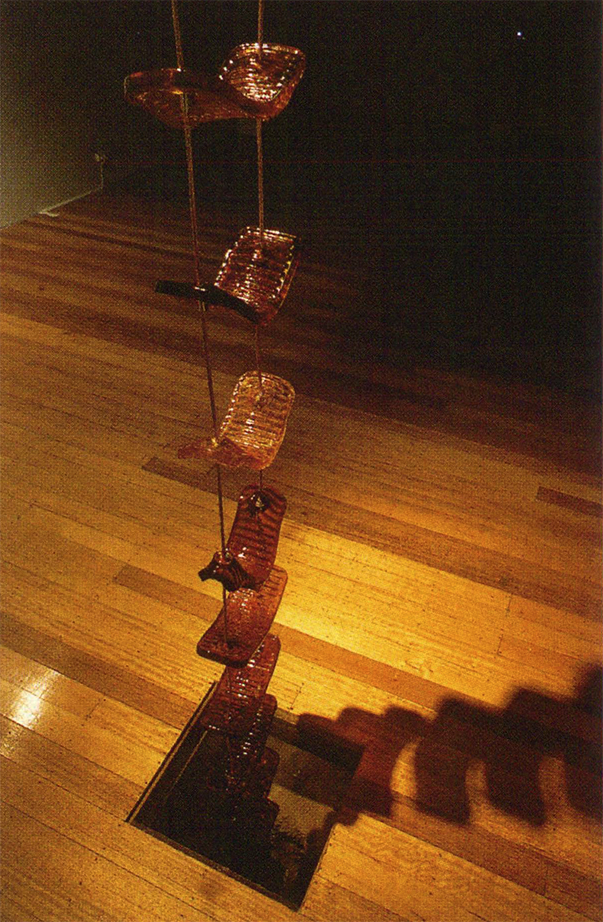
A city can be anything you want it to be. On a good day, the pulsating energy of crowded streets can fill the senses with excitement and possibility. On a bad day, loneliness and anonymity will seep out of the pavement cracks and infect all that passes by. For Celia Lendis, the curator of Scape, the city is a vessel of memory, a site filled with 'public and private histories'. How we take in and respond to what is around us ultimately shapes our identity and sense of place. Inviting six artists to explore this broad theme, Lendis presented an exhibition that paid homage to surface, the construction of space and how we place ourselves in it.
As the 2003 instalment of CAST's Emerging Curator Program, Celia Lendis wove a thematic web heavily laden with personal experiences. With only one reference to the plethora of academic and literary writing and artwork devoted to issues of identity and urban space (John Locke, Charles Dickens, Cindy Sherman and David Lynch have all explored these themes to some degree) and no contemporary contextualisation of the work included, the accompanying exhibition text disappointingly fell short of thoroughly fleshing out the critical significance of Scape's innovative collection.
By far the most evocative work in the show was Rung (Ladder), 2003 by installation artist, Lucy Bleach. Hanging in the middle of the gallery was a ladder constructed of copper electrical wire and inch thick, sticky toffee. Slowly disintegrating under the heat of the gallery lights, the rungs of toffee dripped in mesmerising stringy dollops into a square hole that exposed the dusty concrete guts of the building. Evaporating into the moist air, Rung's sugary breath extended over the surrounding floor and clung to the viewer's shoes like an overzealous host. Having viewed Rung close to the closing date, the top rungs had taken on the appearance of stalactites and created a delicious, constantly changing work that hinted at the contained energy and eroding innards of electrical and communication networks hidden beneath the skin of urban terrain. The conceptual expertise and excellent use of material in Rung, added much to Bleach's growing reputation as one of Tasmania's best site-specific artists.
Referencing the geometric shapes and patterns of modern architecture, Rebecca Coote's Seeming, 2003 was a delicate combination of form and shadow. Arranged in three-dimensional triangular configurations, twelve panes of glass mimicked the contours of open windows or old-fashioned mismatched glass louvres. Transparent strips of signwriter's vinyl had been applied in thin horizontal strips to the jutting panes and added a juxtaposed pattern of linear shadows on the wall behind. A superb melding of the solid and the ephemeral, Seeming 2003 held back as much as it gave, echoing the stark reflective surfaces of apartment blocks and high-rise buildings.

Directly opposite the industrial photography of Kristian Haggblom was the noteworthy Future Archaeology 2003 by Rebecca Stevens. Reminding me of the scratchy illustrative style of graphic design currently in vogue, Stevens etched the banal outlines of metal stairs and discarded ladders onto grubby slabs of plaster. The arcane nature of the journey – recorded in Future Archaeology as small elements of a much larger, unseen whole – became the graffiti of possibility and gave Scape its abstract, gritty edge.
Additional works by Ali Aedy and Lucy Bleach were spoiled by their positions beneath the dim light needed for Sally Rees' video projection, Intermission 2003. Set in a draughty room behind the gallery wall and viewed through an eye-level peephole, the faceless group of draped, crawling figures in Aedy's He(a)rd, 2003, may have suffered the unfortunate fate of being unintentionally overlooked.
While a good dose of objective investigation would have accentuated the thematic concerns of Scape, the work chosen for the exhibition was well worth the visit. Given the rapidly expanding seams of city environs and related lifestyle changes, creative and theoretical explorations into the effects of life in the metropolis will draw from the well of inspiration for some time yet. Scape was at least a good bucketful.












